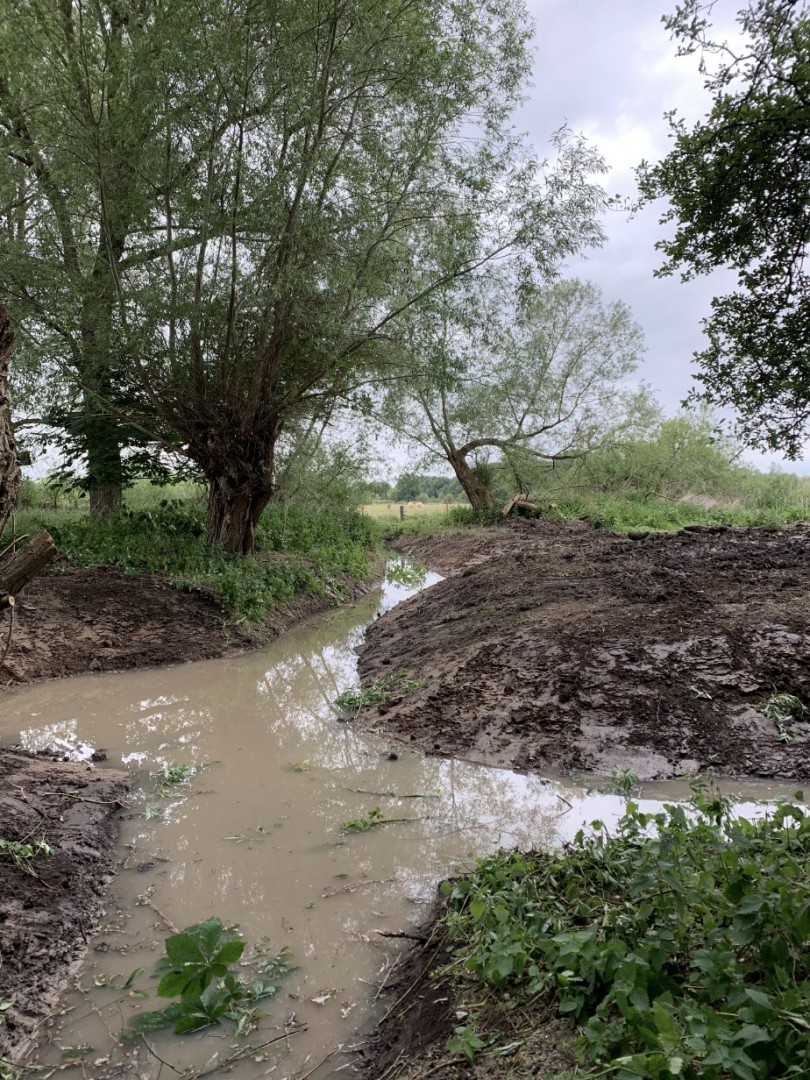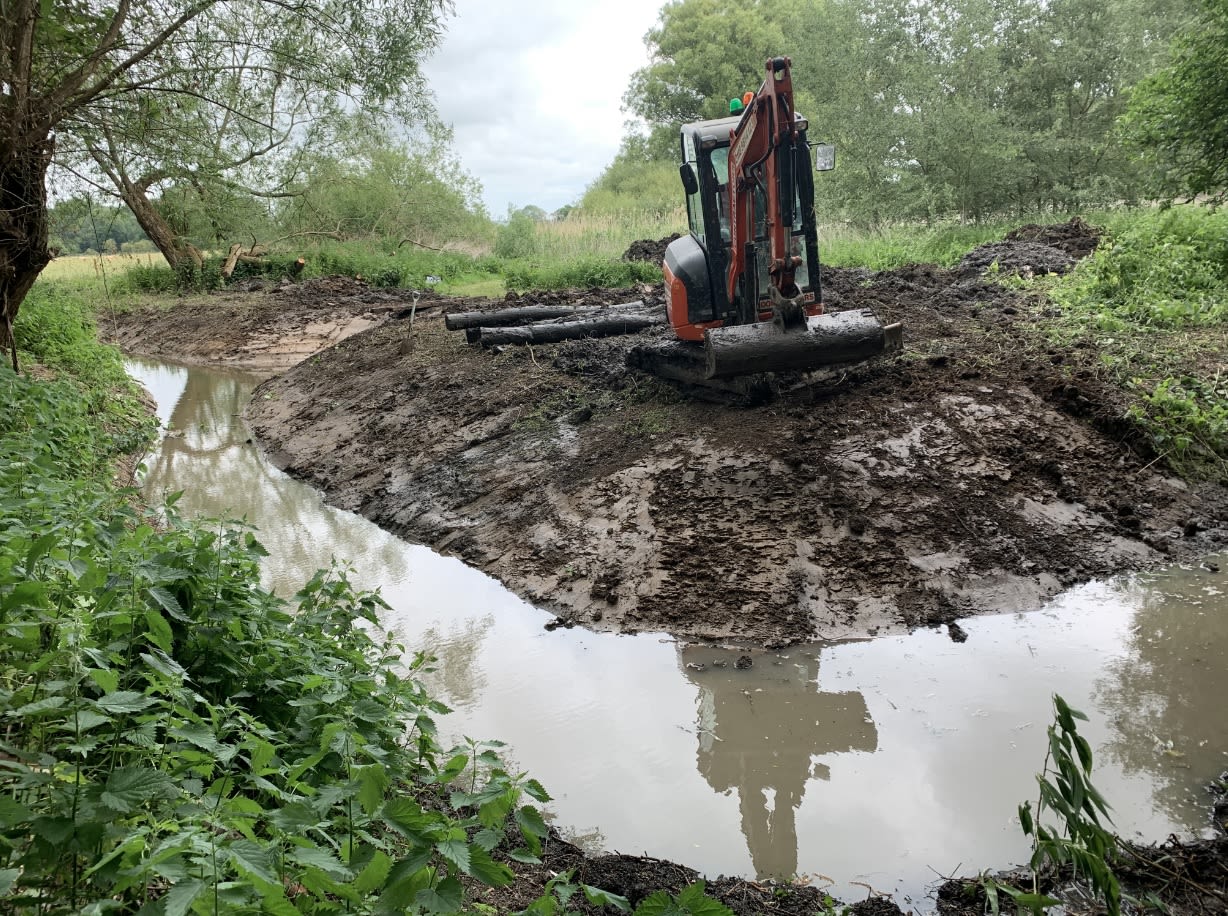This week I’ve been working alongside the River Thame Conservation Trust to restore some of the old river channels on an island, formed where the River Thame splits to feed an old mill; with the millstream and race on one side and the main river on the other.
The objective of this phase of the River Thame Conservation Trust’s project was to restore some old and create new shallow backwaters from the main river. These backwaters are really important to the wildlife of the river as this is where fish fry (baby fish) can grow in shallow warm water away from larger predatory fish. This was a three-day project and at the beginning of day three, there were already fry in the new channels.
 There is a tendency to dig deep when creating ponds and channels, but without good reason, this is often a mistake. Wildlife likes varying depths of water and especially long shallow slopes into the deep water (referred to as drawdown zones) which are ideal for many species of plant and animal.
There is a tendency to dig deep when creating ponds and channels, but without good reason, this is often a mistake. Wildlife likes varying depths of water and especially long shallow slopes into the deep water (referred to as drawdown zones) which are ideal for many species of plant and animal.
I used a drone – I’m a commercial drone pilot – to photograph the selected area beforehand, then produced maps showing ground levels and height differences to help select the perfect location for digging the channels. On completion we took photographs as a record of works; photos will then be taken annually from a fixed height and point (georeferenced) to monitor the site’s development.
Works within a floodplain and within 8m of a main river usually need permission from the Environment Agency. Generally when working on these kinds of sites, dug out spoil (soil etc.) must be removed from the site and off the floodplain – this is likely to significantly increase cost. However, if you have a watercourse within your land and you think the benefits for wildlife could be increased, it is worth having a chat with a local land management specialist who can point you in the direction of whether or not there is funding available for this type of conservation or habitat creation work.
James Gillies has many years of experience in managing and creating wildlife habitats. In 2018 he launched his hugely successful meadow project which created a patchwork of habitats across the UK, from Scotland to the South Coast. Water and wetlands (landscape with open water and wet ground) form one of James’ three pillars for wildlife enhancement, the other two are woodlands and wildflowers.
There is often funding available to either fully or partly fund conservation work on farms and managed land, through a myriad of schemes available: some government, some charity and some corporate. To discuss whether your project could be subject to a funding boost contact james@james-gillies.com










